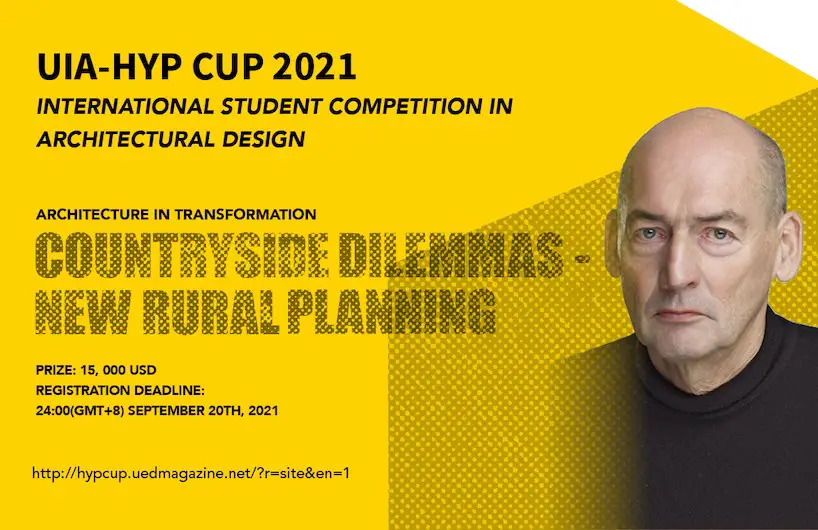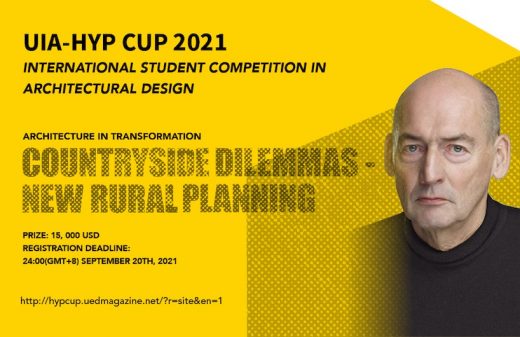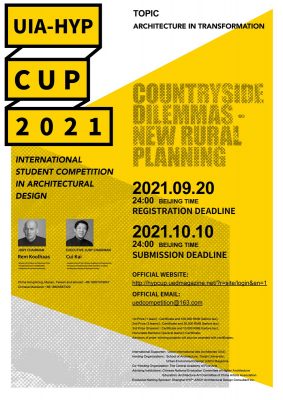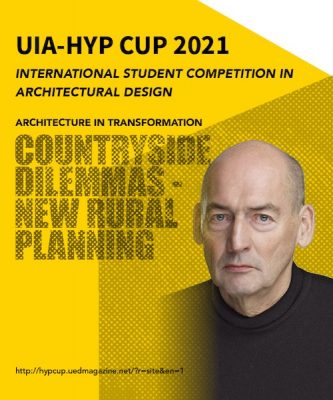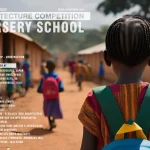UIA HYP Cup 2021 International Student Competition, Architecture Design Contest by UED Magazine + UIA
UIA HYP Cup 2021 International Student Competition
28 July 2021
UIA-HYP CUP 2021 International Student Competition in Architectural Design is coming.
The following are the highlights of the competition:
Jury Chairman: Rem Koolhaas
Theme: Architecture in Transformation
Topic: Countryside Dilemmas-New Rural Planning
Registration Deadline: 24:00(GMT+8) September 20th, 2021
Submission Deadline: 24:00(GMT+8) October 10th, 2021
Jury Review: October 2021
Competition Website: http://hypcup.uedmagazine.net/?r=site&en=1
UIA HYP Cup 2021 International Student Competition Topic
Competition Topic: Countryside Dilemmas- New Rural Planning
The advent of the year of the Ox brought destruction to the ancient village of Wongding in Yunnan, which has been recognized as important cultural countryside heritage since 2006. The fire that raged through Wongding however exposed more fundamental dilemmas that go beyond replacing the village’s thatched rooftops and intricate wood constructions, which my team and I have been observed in many places in the world for some time now. It coincides with an important crossroads in thinking about the future of the countryside in China and beyond.
China’s rural development has been largely based on top-down industrial planning. Like in many places in the world this brought modernity to the countryside and offered dramatic improvements in the quality of life for many. It however also meant that historical, natural, and cultural quality concentrated in age-old ways of living suffered. In 2020 the unprecedented anti-poverty campaigns in China that reshaped countrysides since the 1970s across the nation and specifically areas not unlike those we find in and around Wongding came to a first completion. This important milestone marks an important moment for reflection on this initial way of working not only for China: it demands new considerations on the future of planning the countryside.
China is not alone in this struggle. In the exhibition and book Countryside. The Future I showed with the AMO team and a large group of experts how far architecture has drifted from the countryside across the globe. From looming environmental disaster in Russia, the firm corporate grip of ruthless forms of Cartesianism in the West, to the larger global consequences of preservation and growing migration crises, we show that thinking and planning the countryside has never been more important for a shared future.
The old way of planning large swaths of countryside around the world was largely based on an industrial and material-based planning method or the narrow interests of markets. Both are up for reinvention. We also witness how conventional ways of defining heritage are buckling under pressure of packaged tourism, generating a hollowing of what we consider authentic. Combined with the new ambitious sustainability and rural revitalization goals, these are new milestones of a different nature, which need a new approach in it recognizing the quality of village life.
Both the environment and the need for more sustainable ways of living urge us to rethink our relationships with nature and culture. It is also clear that a new generation wants a different form of interaction with the countryside. Informal tools and platforms like Chinese Rural Taobao, rural social media platforms like Kwaisho, and small-scaled technological and financial add-ons used in the Sub-Sahara, offer the start of a new toolkit for planning, framing, and experiencing the countryside: offering hybrid active lifestyles where countryside and urban activity generate a new blended life. Besides convenience and comfort, the authenticity of a ‘real’experience and focus is paramount.
The countryside fundamentally challenges the paradigm of the architectural profession by requiring a more deeply ingrained role compared to being a city’s ‘service provider’. There might be no such thing as architecture related-information to fall back to. Rural context requires a skills set where economy, infrastructure, new and old technology, and culture have to work in unison, in order to generate new experiences. Solely mastering old arts and crafts will not bring the future that is needed.
We ask you to submit these ideas and or the best case studies examples that challenge existing planning tradition to collectively build a library of the most relevant and interesting possibilities to give a new fundamentally revised view of the future of the countryside.
Jury Chair: Architect Rem Koolhaas of celebrated architecture studio OMA, Rotterdam, The Netherlands
UIA-HYP Cup 2021 information / images received from UED Magazine, Haidian District, Beijing, P.R.C
UIA HYP Cup International Student Competition
UIA HYP Cup 2017 International Student Competition in Architectural Design
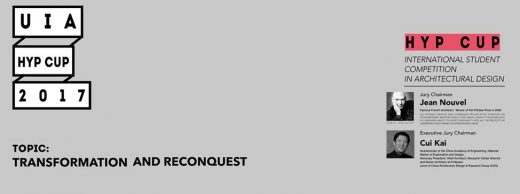
UIA-HYP Cup 2017 Architecture Competition
UIA HYP Cup 2014 International Student Competition in Architectural Design News
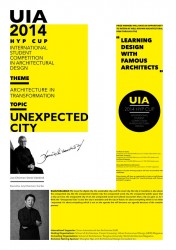
UIA-HYP Cup 2014 Architecture Competition
Location: People’s Republic of China
China Architectural Designs
Chinese Architecture Designs – architectural selection below:
China Architecture Designs – chronological list
Architect: gmp · von Gerkan, Marg and Partners · Architects
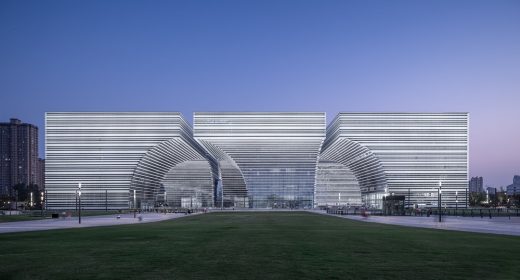
photography © Schran Images
Changzhou Culture Center Building
Shanghai Sanctum
Architects: Wutopia Lab
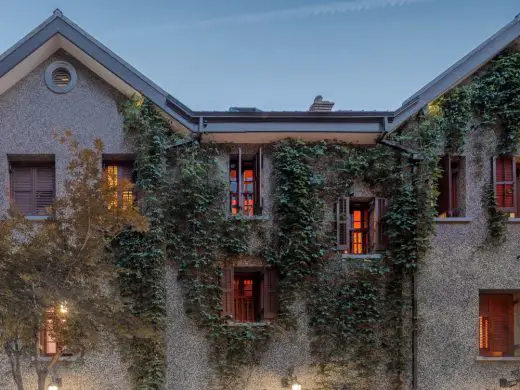
photo : CreatAR Images
Sinan Bookshop in Shanghai
Architecture Competitions
Architectural Competitions : links
Architecture Competitions – architectural selection below:
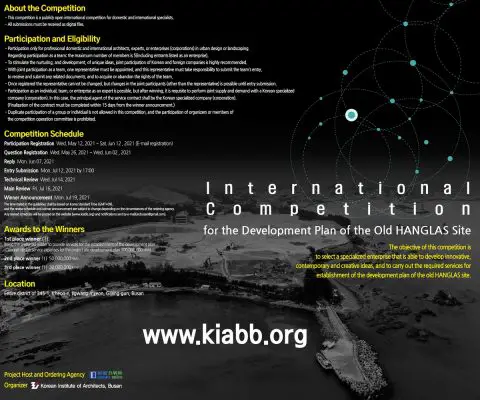
Old Hanglas Site International Competition
, South Korea
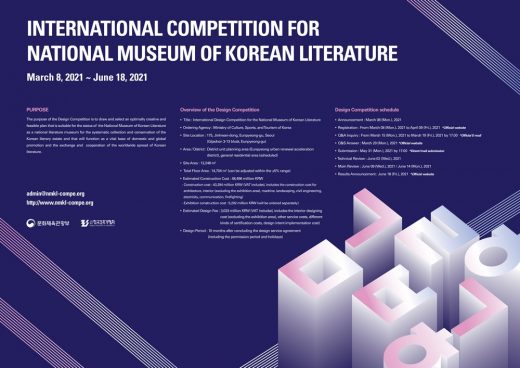
Competition for the National Museum of Korean Literature
Comments / photos for the UIA-HYP Cup 2021 International Student Design Contest page welcome
Website: Architecture

